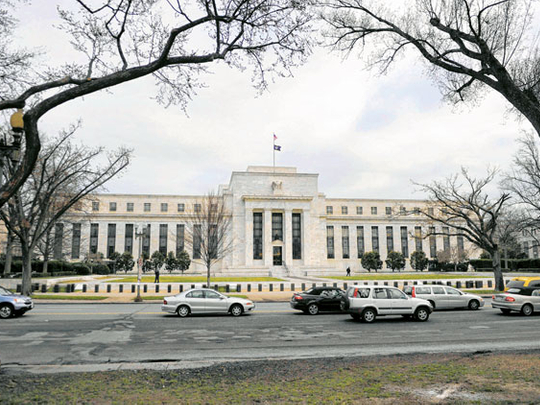
Stock markets suffered heavy losses on Thursday as flight to safety gathered pace following the release of the Federal Reserve’s July meeting minutes. However, the markets saw a rebound on Friday as investors rushed to buy the lows confirming that tapering alone is the reason for market gyrations.
The Fed has been hinting at winding down its $120 billion a week bond buying programme, which could mean an early beginning of policy tightening leading up to rise in cost of funds and potential capital flight from emerging markets.
The latest Fed minutes signalled that it will start tapering its quantitative easing before the end of the year, if America’s labour market keeps recovering, resulting in a sharp plunge in equities and gains in the dollar.
A mini tantrum?
Was market reaction to the Fed minutes on Thursday a mini-taper tantrum? Not really.
Given the current market conditions, the sell-off has come from a combination of factors ranging from the growing unease over the dizzying highs to which stock prices have climbed, the uncertainty around the timing and pace of the taper and the rising number of delta cases around the world.
Undoubtedly, a sudden and large tapering has the potential to drag down asset prices across the world leading to capital flight to safety.
Obviously, the Fed minutes is not in any way hinting at such a course of action.
Better be ready
Emerging markets threw a massive tantrum in 2013 when the Federal Reserve suggested it may taper the [financial] crisis-era asset purchases. A repeat of such events are unlikely this time around because most countries have better fiscal positions and stronger reserves to deal with the fallout from a Fed taper.
Higher oil prices combined with improved non-oil revenues have fortified the fiscal and external positions of GCC countries, making them better prepared for US policy tightening.
GCC’s aggregate current account surplus is projected to witness more than fivefold growth in 2021 to $109 billion from $20 billion in 2020, according to the Institute of International Finance (IIF). The IIF has projected GCC’s hydrocarbon revenue to increase from $221 billion in 2020 to $326 billion in 2021.
The 2021 budgets in the six GCC states envisage significant fiscal consolidation. The fiscal adjustment also relies on improvement in non-hydrocarbon revenues through tax reforms.
While most emerging market have learned their lessons from the previous Fed tightening, with solid fiscal and external positions and resilient credit ratings, GCC has the least of reasons to throw a tantrum when Fed decides on the size and timing of its tapering.








